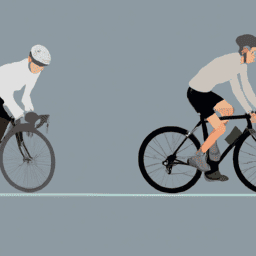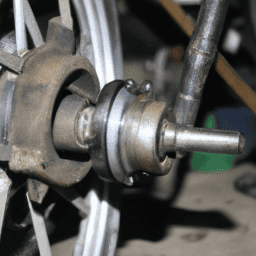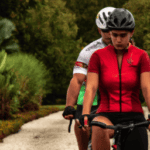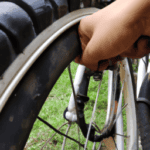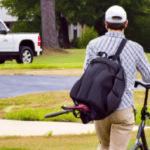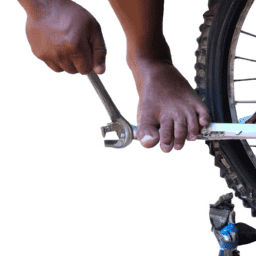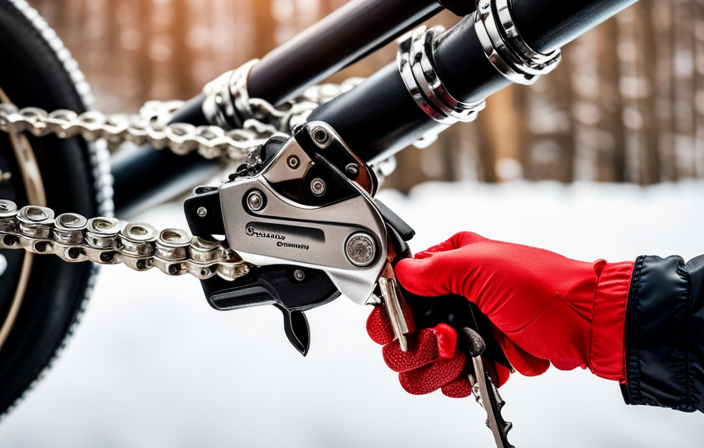Cycling offers limitless advantages, enhancing both physical and mental health. For novices, cycling might appear confusing, but with some practice and perseverance, mastering the art of bike riding is possible for everyone. In this guide, I’ll walk you through the essential steps of cycling, including getting ready for your journey, dealing with traffic, and overcoming hurdles. Armed with this advice, you’ll soon be ready to tackle the roads confidently on your bicycle.
First things first, let’s begin with preparing for the ride. Before you even think about getting on the bike, make sure you have the proper gear. A helmet is a must to protect your head in case of a fall. Wear comfortable, breathable clothing that won’t hinder your movement. Sneakers or shoes with a flat sole are ideal for proper foot placement on the pedals.
Once you have your gear, find a suitable location to practice. A flat, paved surface with minimal traffic is best for beginners. With these preparations in mind, let’s get ready to ride!
Key Takeaways
- Proper gear, including a helmet and comfortable clothing, is necessary before riding.
- Correct foot placement and hand grip are important for balance and control.
- Staying alert and aware of surroundings is important when navigating traffic and obstacles.
- Practice and patience are necessary to confidently ride a bike.
Preparing for the Ride
You can’t wait to hop on your bike and feel the wind in your hair, but before you do, you gotta make sure you’re prepared for the ride.
Start by going through a pre-ride checklist. Make sure your tires are properly inflated, your brakes are working, and your chain is lubricated. Check your helmet to ensure it fits properly and is secure. Don’t forget to bring water and snacks to keep you fueled up during your ride.
Choosing the right gear is also important. Wear clothing that’s comfortable and allows for movement. Avoid loose or baggy clothing that could get caught in the bike’s moving parts. Closed-toe shoes with good grip are essential for keeping your feet on the pedals.
Once you’re fully prepared, it’s time to get on the bike and start your ride.
Getting on the Bike
When getting on a bike, the first thing I do is make sure it’s stable. I then lift one leg over the bike and position myself in the seat, making sure it’s at a comfortable height.
Finding my balance is crucial at this point, as it allows me to start pedaling smoothly and confidently.
Mounting the Bike
First, take a deep breath and feel the excitement as you swing your leg over the bike and settle onto the seat. Before you start pedaling, make sure your foot placement is correct. Your feet should be resting flat on the ground, with the balls of your feet positioned over the pedals. This will give you optimal control over the bike.
Next, ensure that your hand grip is firm but relaxed. Your hands should be positioned on the handlebars, with your fingers lightly curled around them.
Now that you’ve mounted the bike and have your foot placement and hand grip set, it’s time to find your balance. This can be tricky at first, but with practice, it’ll become easier.
Start by pushing off with your foot and coasting for a few seconds. As you coast, keep your eyes ahead and your body centered over the bike. Gradually lift your feet off the ground and onto the pedals while keeping your hands on the handlebars. This will help you find your balance and get ready to start pedaling.
Finding Your Balance
As you settle onto the seat, feel the bike become an extension of your body, like a dancer finding their center on stage.
The next step to successfully riding a bike is maintaining equilibrium. This can be achieved by adjusting your body position and keeping your weight distributed evenly between both pedals.
One way to maintain balance is by keeping your eyes on a fixed point in the distance, rather than looking down at the ground. This helps keep your body aligned and steady.
Additionally, keeping your elbows slightly bent and your hands on the handlebars can help you make quick adjustments to maintain balance. With practice, maintaining equilibrium will become second nature, and you’ll be ready to start pedaling and moving forward.
Starting to Pedal
Now it’s time to pedal and feel the wind in your hair as you glide forward on your trusty two-wheeled companion. Pedaling a bike may seem like a simple task, but there are a few things to keep in mind to ensure a smooth and efficient ride.
First, it’s important to focus on your pedal technique. Make sure to push down with the ball of your foot, rather than the arch or heel, to generate the most power. Additionally, try to maintain a consistent pedaling rhythm, avoiding sudden bursts or pauses.
As you gain speed, you may also need to shift gears to maintain a comfortable cadence. Experiment with different gear settings to find what works best for your riding style and the terrain you’re on. With a little practice and patience, you’ll soon be pedaling like a pro and enjoying the freedom of cycling.
When you feel comfortable with your pedaling, it’s time to move on to turning and steering.
Turning and Steering
To turn while riding, you’ll need to use a combination of leaning techniques and steering the handlebars. To turn left, lean your body slightly to the left while turning the handlebars in the same direction. To turn right, lean your body to the right while turning the handlebars in that direction. It’s important to maintain a steady speed while turning and avoid sudden movements that could cause you to lose control of the bike.
In addition to using proper turning technique, it’s also important to use hand signals to communicate with other riders and drivers on the road. To signal a left turn, extend your left arm straight out to the side. To signal a right turn, extend your left arm and bend it upward at the elbow, forming an L-shape. To signal a stop, extend your left arm straight downward with your palm facing backward. By using these hand signals, you can help prevent accidents and ensure a safe and smooth ride.
When navigating traffic and obstacles, it’s important to stay alert and aware of your surroundings. Keep a safe distance from other riders and vehicles, and be prepared to stop or slow down if necessary.
In the next section, we’ll discuss some tips and tricks for navigating different types of terrain and situations on your bike.
Navigating Traffic and Obstacles
When navigating through traffic and obstacles, you must always stay alert and aware of your surroundings. Anticipating hazards and signaling your intentions are key to avoiding collisions and reacting quickly when necessary.
Keep a safe distance from other riders and vehicles, and always be prepared to make sudden stops or changes in direction. It’s important to scan ahead and identify potential hazards, such as potholes, pedestrians, or cars making sudden turns. Use hand signals to indicate your movements, and make eye contact with drivers to ensure they see you.
When passing parked cars, watch for doors that may suddenly open, and give yourself enough space to react if necessary. Remember to always obey traffic laws and ride defensively. By staying aware and alert, you can safely navigate through traffic and obstacles on your bike.
As you navigate through traffic and obstacles, it’s important to be prepared to stop and dismount when necessary. Practice braking smoothly and evenly, using both your front and back brakes to slow down gradually.
When coming to a stop, put one foot down and keep your bike upright. To dismount, swing your leg over the back of the bike and step down with your other foot. By mastering these skills, you can confidently ride your bike through any situation.
Stopping and Dismounting
As you come to a stop, remember to smoothly apply both your front and back brakes, using them evenly to slow down. Proper braking technique is essential to ensure a safe and controlled stop.
When approaching a stop sign or red light, you should begin to slow down well in advance, and then gradually apply the brakes as you come closer to the stopping point. Avoid slamming on the brakes, as this could cause you to lose control of the bike and potentially lead to an accident.
Once you have come to a complete stop, it’s time to dismount the bike safely. To do this, put your left foot on the ground and swing your right leg over the back of the bike, carefully stepping down with your right foot. Keep a firm grip on the handlebars as you dismount, and make sure to check for any traffic or pedestrians before stepping off the bike.
By following these safe dismounting procedures, you can ensure that you and others around you stay safe while riding your bike.
Frequently Asked Questions
What is the proper technique for shifting gears on a bicycle?
To shift gears on a bicycle, I adjust the gear ratio by moving the shifter on the handlebars. It’s important to maintain proper chain tension and lubrication to ensure smooth shifting and prevent wear on the gears.
How do I adjust the height of my bicycle seat?
Adjusting my bike seat height is a piece of cake. First, I loosen the bike seat post clamp and set the saddle angle. Then, I adjust the height according to my comfort level and tighten the clamp. Voila!
What are some common mistakes to avoid while riding a bicycle?
To avoid accidents, it’s important to learn proper braking techniques and scan ahead for obstacles. Avoid sudden stops and always signal to other riders or drivers. Stay aware of surroundings and adjust speed accordingly.
How can I improve my balance on a bicycle?
Improving my balance on a bike requires practice and patience. I like to incorporate balance drills into my routine and ride with a partner for added support. It’s a challenging skill, but with time, it becomes easier.
What type of clothing and gear should I wear while riding a bicycle?
To ensure cycling safety, wear a properly fitting helmet and bright, reflective clothing. Always maintain your bike by checking brakes, tires, and chain. Riding with proper gear can prevent accidents and injuries.
Conclusion
So that’s it, folks! You’ve learned the basics of riding a bicycle. Practice makes perfect, and it’s okay to fall a few times before you get the hang of it. But once you do, it’s a feeling like no other.
You’ll be able to explore your surroundings in a whole new way and enjoy the benefits of exercise and fresh air. As a coincidence, I actually went on a bike ride this morning, and it was such a beautiful experience.
I saw so many things I would’ve missed if I were in a car or on foot. So go ahead and grab your bike, put on your helmet, and hit the road. Happy riding!
